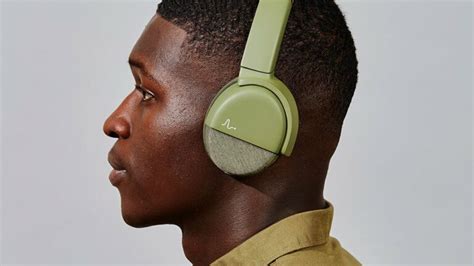In an age where technology continuously redefines our everyday experiences, the introduction of AI-powered headphones that can isolate a single voice in a noisy environment marks a pivotal moment. These innovative devices have the potential to transform not just how we interact in social scenarios but also to offer significant benefits to individuals with hearing impairments and other auditory processing disorders. The premise is simple yet groundbreaking: by looking at a person, the headphones focus solely on that individual’s voice, filtering out the surrounding cacophony.
Imagine being at a bustling party, a noisy restaurant, or a crowded conference, and effortlessly isolating the voice of the person you’re conversing with. This technological feat sounds straight out of a sci-fi movie, yet it’s closer to reality than ever before thanks to recent advancements in machine learning and audio processing. The concept, often compared to the ‘cocktail party effect’—wherein our brains naturally single out a specific conversation in a noisy setting—utilizes advanced algorithms to mimic this capability.
Early discussions and user comments underline the potential impact this technology could have on people with hearing impairments. As one user noted, the chance to focus on a single voice in a noisy room would be transformative, eliminating the struggle many face in environments with significant background noise. Individuals with ADHD or autism spectrum disorder, both of whom may struggle with processing multiple auditory inputs, stand to benefit immensely from this advancement.
Additionally, academic experts emphasize that this technology could alleviate social fatigue for those who find public interactions mentally draining. By filtering out unimportant noises, the brain can relax, allowing users to engage more effectively and enjoyably. This aspect alone could lead to widespread adoption, from business meetings to family gatherings, providing a respite from the sensory overload that modern life often entails.
From a practical viewpoint, making this technology accessible and affordable remains a challenge. There’s always a risk that such devices, if commercialized without consideration for broader market dynamics, could remain out of reach for many who need them the most. The open-sourcing of their code, as one commenter highlighted, offers a glimmer of hope that this technology can evolve in an inclusive and collaborative manner. By enabling developers worldwide to build on the initial prototype, the pathway to more sophisticated, cost-effective solutions becomes more feasible.
The discussion among early testers and interested users also pointed to additional desirable features. One such feature is the ability to ‘mute’ specific sources of noise. Imagine a situation where you could block out the incessant chatter of a particularly loud colleague or the drone of an irritating background hum while retaining the important sounds you need to hear. It’s a feature that could benefit many, from shared workspaces to home offices where the demands for focus and concentration are high.
However, it’s essential to acknowledge potential ethical and privacy concerns. The ability to isolate voices could easily be misused as an eavesdropping tool, leading to privacy invasions. Ensuring that such technology is deployed responsibly and ethically is crucial. Robust guidelines and user education on proper use could mitigate these risks while preserving the many benefits it offers.
Future applications also tantalize the imagination. One promising direction is integrating this technology with augmented reality (AR) glasses, creating a fully immersive sensory environment where not just sound but also visual cues help filter and enhance our interactions. The combination of eye-tracking technology with advanced audio processing could lead to unprecedented levels of personal and professional efficiency.
In conclusion, AI-powered headphones capable of isolating specific voices in noisy environments represent a leap forward in audio technology. They promise enhanced social interactions, greater inclusivity for individuals with auditory challenges, and new levels of convenience in managing our sensory environments. While challenges remain, particularly around cost, accessibility, and ethical use, the potential these devices hold to improve our daily lives is inarguably vast. As the technology matures and becomes more widely available, we can anticipate a world where the struggle to be heard and to hear clearly in crowded spaces becomes a thing of the past.


Leave a Reply